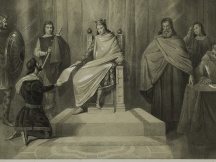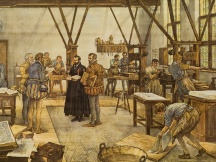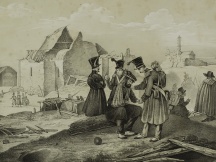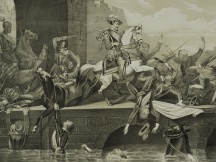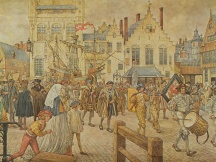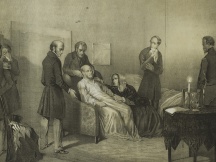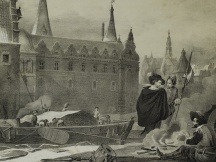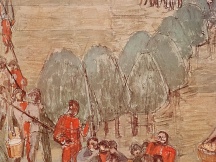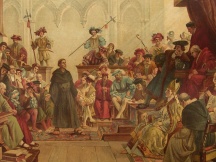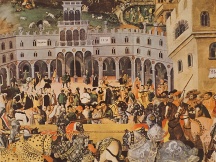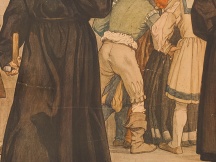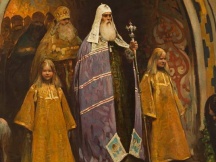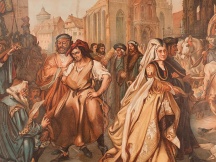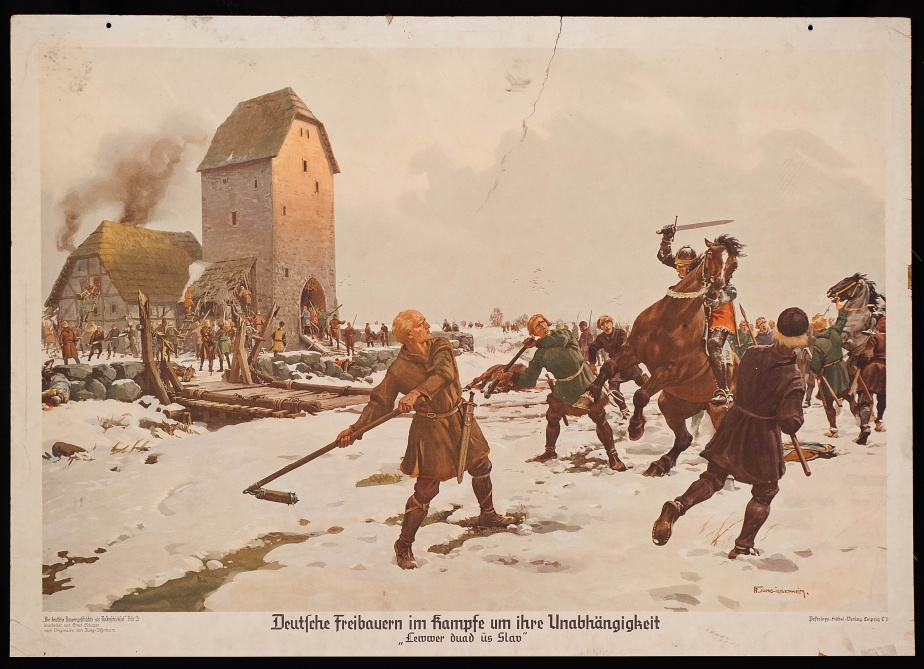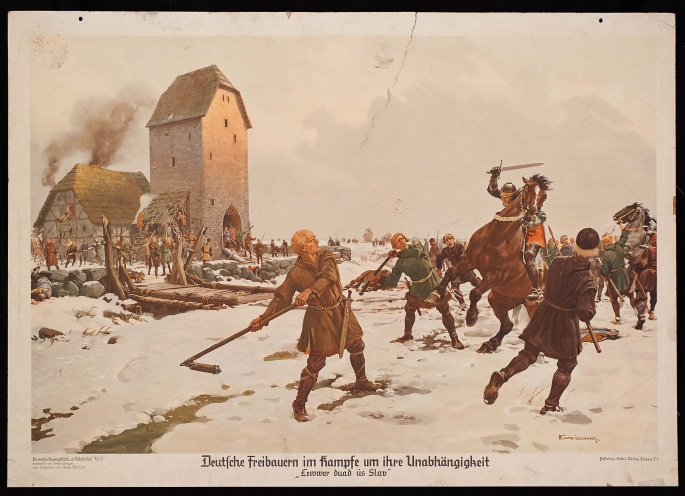Series: |
Die deutsche Bauerngeschichte als Volksschicksal |
|---|---|
Timeframe: |
Mittelalter |
Scene of action: |
Unknown |
Illustrator: |
Jung-Ilsenheim, F. |
Publisher: |
Pestalozzi-Fröbel-Verlag, Leipzig |
Year of publication: |
unknown |
Themes: |
The picture shows a scene of the German peasants‘war between 1524 and 1526 (Southern Germany, Austria, Switzerland). Beside the peasants also mine workers and urban citizens took part in the revolution against the oppressive authorities. You can see the fight of the peasants against the knights of the seigniors. The peasants are fighting with lances and flails. In the background other peasants are looting and destroying a mill, probably an aristocratic estate. The battlefield is covered with snow; the scene of the depiction is dated to March of the year 1525 – the beginning of the revolts in Leipheim. The peasant troops were combated by the troops of the Swabian confederation. The subtitle of the wall chart is “Lewwer duad üs Slav” (its better to be dead than to be a slave) cites a Frisian slogan, well known as verse of Liliencron’s ballad “Pidder Lüng” (1844) which tells about the revolt of a poor fisherman. Later the slogan was abused by the Nazi-Propaganda as an example for the alleged bravery of the (blonde and blue-eyed) Nordic.
